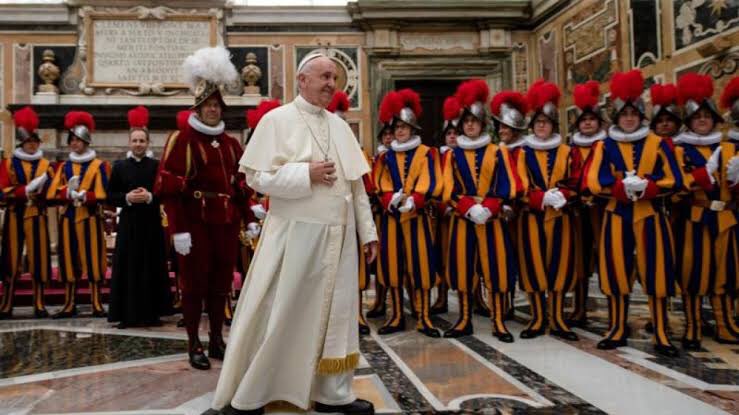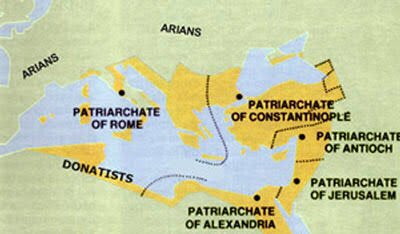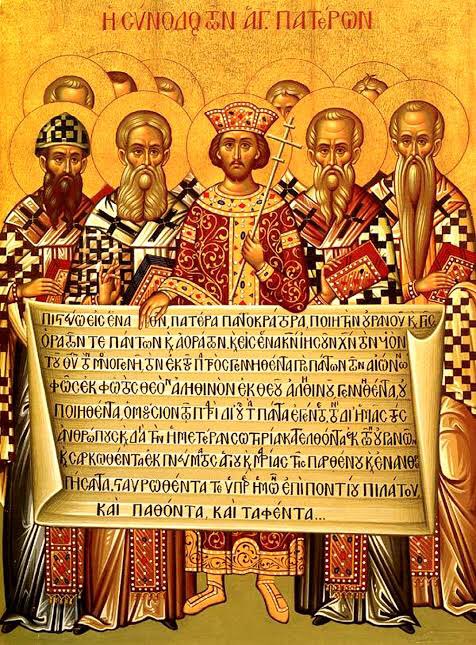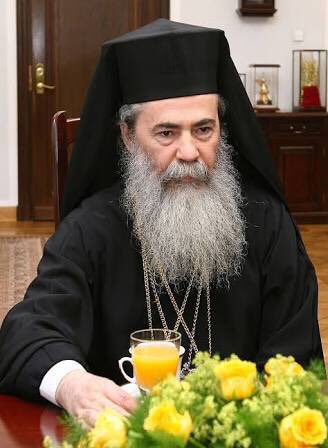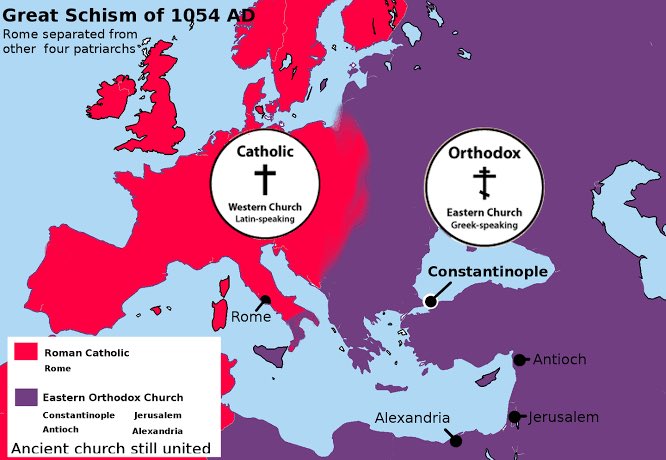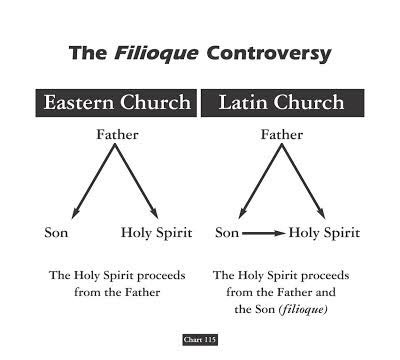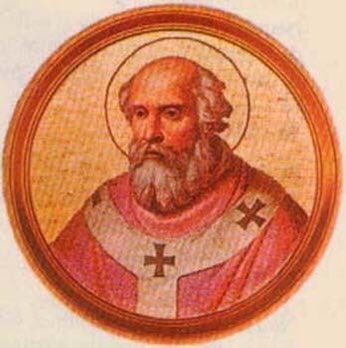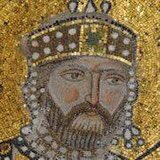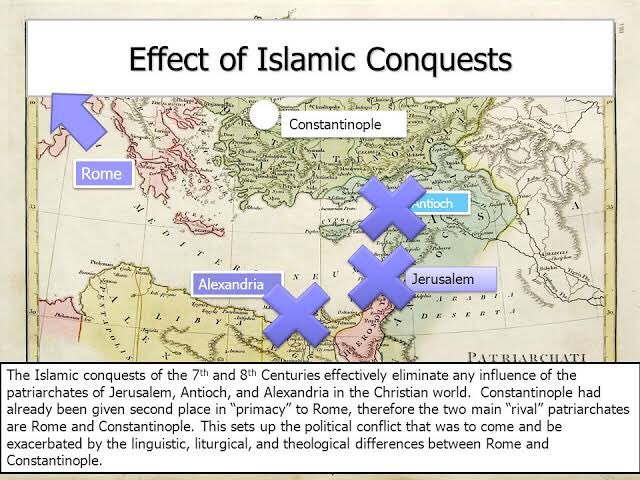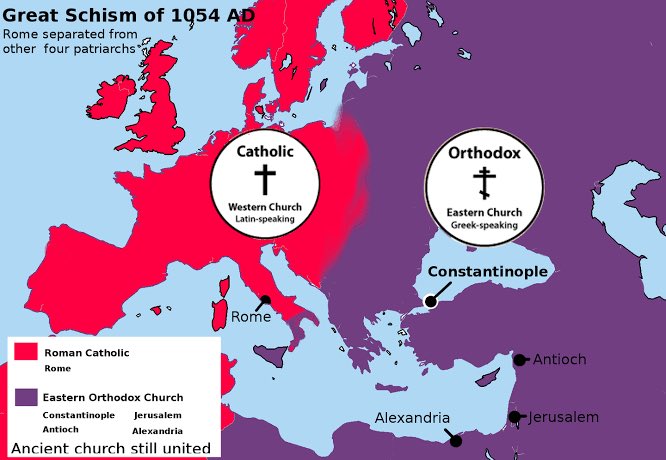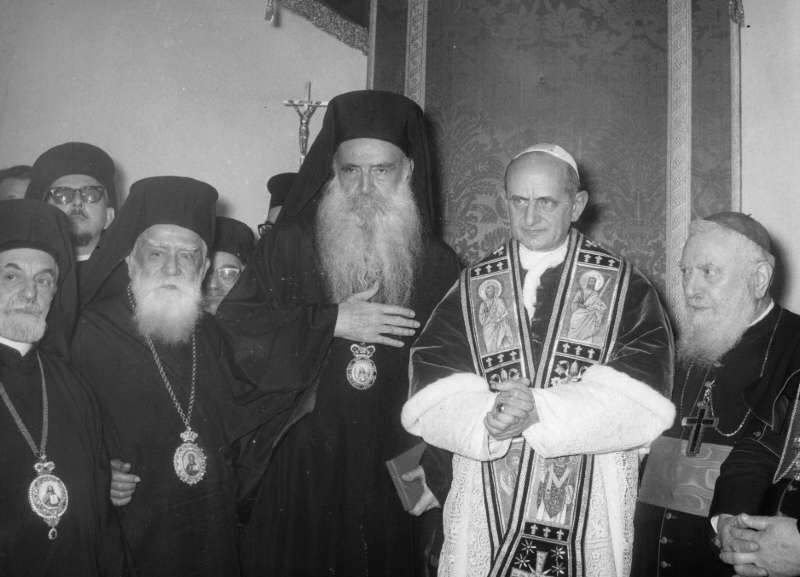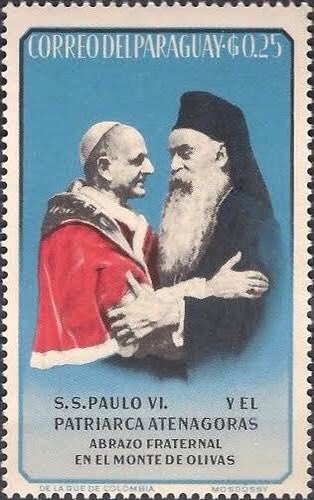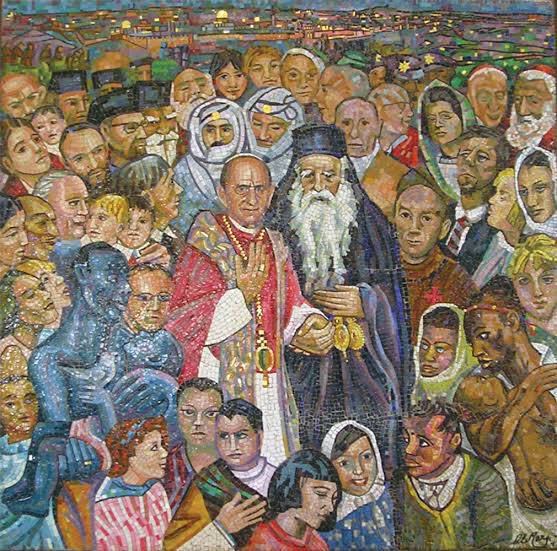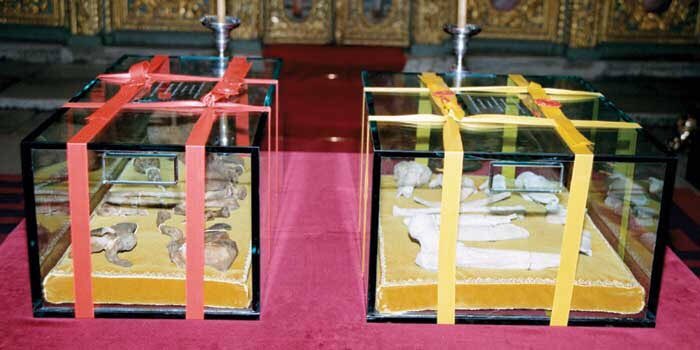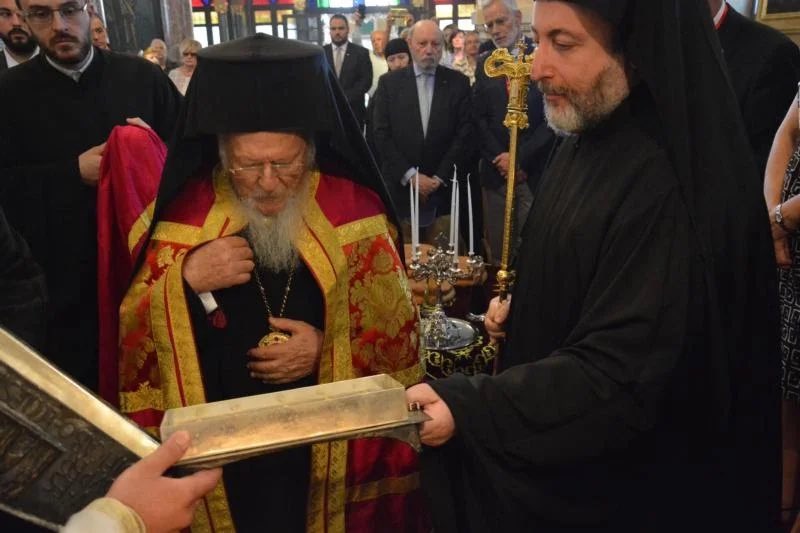Is the Pope of Rome the most senior Christian hierarch?
Yes; and No!
This in itself is not really an important question but answering it reveals certain interesting historical facts.
Let’s go into a little church history.
Yes; and No!
This in itself is not really an important question but answering it reveals certain interesting historical facts.
Let’s go into a little church history.
Before 1054, there was only one ‘The Holy, Catholic & Apostolic Church’ with five branches. Each of the branches was founded by some of Christ’s apostles. Andrew founded the church in Constantinople, Mark the church in Egypt, Peter, Rome, James, Jerusalem & Peter again, Antioch.
Note that Constantinople and Antioch no longer exist on the map today. Constantinople now is restricted to the small compound where the Pope lives in Istanbul, Turkey. Damascus in Syria is now the seat of the Pope of Antioch.
The one universal church was organised into a pentarchy, ie five independent but cooperating regions or dioceses, after the original apostles had long died. These were Rome, Constantinople in modern Turkey, Antioch in Syria, Alexandria in Egypt and Jerusalem.
Each region was headed by a senior bishop. All five of them were affectionately referred to as Pope, Abba or patriarch, which simply means father or great father. They operated on the basis of equality but had a first among equals in the Pope of Rome.
Three of the five Popes. From left, Theodoros of Alexandria, Francis of Rome, and extreme right, Bartholomew of Constantinople. 2nd from right is the Egyptian Coptic Pope. (He is another story for another day.) The Popes of Antioch and Jerusalem were absent on this occasion.
Peter & Andrew, founders of the church in Rome & of Constantinople, were actually children of same parents; Andrew, the older of the two. So there’s an ancient unwritten understanding which grants Popes of Constantinople certain privileges as successors to the elder of the 2!
Around the end of the first millennium, series of disagreements, which had been brewing came to a head, pitting 4 of them in the East, against Rome in the West. The principal theological issue was a simple, incomplete sentence, called the Filioque: “...and the son”.
The Roman church had decided to unilaterally included that phrase in the agreed creed, in the part where it narrates the procession of the Holy Spirit. The inclusion altered it to: “who proceeds from the father and the son...” from the original, “who proceeds from the father...”
This seemingly innocuous but apparently significant theological detail led the then Pope of Rome Leo IX and Michael Cerularius, the Pope of Constantinople to mutually excommunicate each other.
The Islamic conquests of Alexandria, Jerusalem, and Antioch earlier in the 7th century had left Constantinople as the only practical authority in the whole of the East. So it made the disagreement look like it was really between the Popes of Rome and Constantinople.
The disagreement led to what is called the great schism of 1054. It was the first major open disagreement among the churches of the five territories and led to a separation among them. The four in the east on one side and Rome in the west on the other.
The four regions in the east became what is known as the Eastern Orthodox Church under the symbolic leadership of the Pope of Constantinople and the one in Rome as the Roman Catholic Church under the Pope of Rome.
This mutual excommunication was to last over the next 1,000 years, ensuring that none of the successors of the two ever set eyes on the other till 1964 when Pope Paul VI of Rome had a face to face meeting in the mount of olives, Jerusalem with Pope Athenagoras I of Constantinople
The meeting, preparation for which actually started with some of the easing of rules under the previous Pope John XXXIII paved way for the lifting of their mutual excommunication on each other in the following year, 1965.
Since then the two sides have exchanged a little more than a dozen visits in both Constantinople and Rome, marked by exchange of historical gifts and properties forcibly seized over a thousand years back.
These include the return of relics, little shards of bones from the remains of Gregory the theologian and St. John Chrisostom to Constantinople.
Pope Paul VI returning a reliquary containing the skull of St Andrew, founder of the church of Constantinople.
So, to go back to our opening question.
The Pope of Rome is indeed the most senior hierarch based on the direct pronouciation of Christ, but let’s not forget forget that by tradition, he has an older brother in Constantinople!
The Pope of Rome is indeed the most senior hierarch based on the direct pronouciation of Christ, but let’s not forget forget that by tradition, he has an older brother in Constantinople!
P/S Church history is quite complicated by the fact that at times in history the church was both the political and religious authority. It has been reduced to very simple terms here.

 Read on Twitter
Read on Twitter